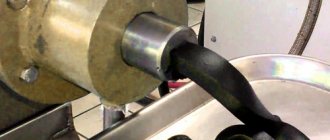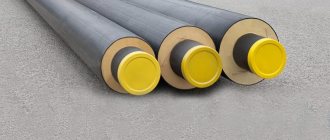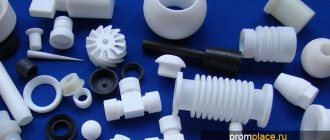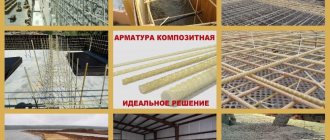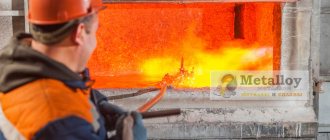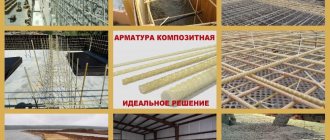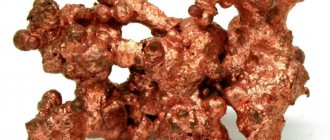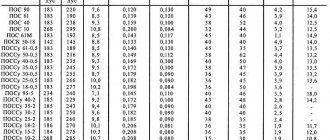The engineering company Technology specializes in the production of small-scale polymer products and mass stamping of various-sized products of various shapes, colors and runs. From us you can order molding of parts and solid goods from amorphous, semi-crystalline and other types of plastic, available for use in programmable injection molding machines. In production, we use high-precision technology, which allows us to produce products that are optimal in price and quality within a timeframe acceptable to the customer, regardless of the type of raw material.
What is liquid plastic
Liquid plastics are a concept that includes a variety of materials produced on the basis of polymers that have a fluid consistency that turns into a solid form through chemical processes or exposure to air and a certain temperature.
Manufacturers produce several types of similar material, differing in their functionality, composition, area of use and appearance.
Based on their composition, liquid plastic is divided into:
- one-component;
- consisting of two or more components.
One-component compositions are produced using an organic solvent, where the filler is polyurethane or alkyd, acrylic resin, which contains the necessary additives in the form of plasticizers, modifiers, pigments and other additives that enhance the effect of liquid plastic and give it special properties.
Depending on the composition, liquid plastic can be used to work with various materials - wood, metals, polymer structures, concrete, plaster and others. Most often, liquid plastic for such purposes is represented by various paints and enamels, which, when applied and subsequently dried, form a dense polymer film that reliably protects surfaces from various types of influences - dust and dirt, mechanical stress, temperature changes, and exposure to aggressive environments.
Separately, it should be said about two-component casting compositions, which, as a result of mixing two substances, harden within a few minutes.
TOP-best
The following brands deserve attention:
- Cosmofen - produced specifically for sealing joints. The composition of the mixture allows it to resist the formation of moisture, fungus, and external factors. One-component product, low viscosity. The sizing is instant, since it contains ethyl cyanoacrylate, there is no creation of flaws. Complete drying and hardening occurs after 15 hours. Heat resistance is guaranteed. It conducts heat poorly, so it does not release heated air from the room. Country of origin: Germany.
- Tytan is a sealant for PVC (liquid plastic) windows. Made on the basis of vinyl mastic. Designed for gluing and sealing cracks and joints on polyvinyl chloride. The use of this material ensures the strength of the formed seam, its water-thermal resistance, and is not susceptible to the influence of solar radiation or other street influences. Work should be carried out at temperatures from 15 to 25 degrees. The hardening time depends on the thickness of the applied seam, so with a thickness of 1 mm, complete hardening occurs within a day. Country of origin: Poland.
- Fenoplast is a white liquid plastic. Used for repairing window structures. The seams are strong and reliable. The first setting period is up to 4 minutes. Complete hardening occurs within a day. Country of origin: Germany.
- Enamel “Liquid plastic” DUFA Kunststoff flussig is used as a sealant for wooden windows and PVC. On two planes it forms a strong, durable, moisture- and chemical-resistant coating. It does not resist mechanical stress. There is no smell. One coat is enough to cover the base color. The composition does not spread when applied, as it has a viscous consistency. German quality.
- Greenteq – white hard plastic. It has a one-component composition. Fast polymerization, quality gives frost-heat resistance, impact resistance. Also unaffected by solar radiation. The production is based on diffusion adhesive, vinyl chloride polymer in a solvent. The first setting occurs in a minute at a temperature of 20 degrees and a humidity of 50 percent. Complete hardening, subject to the same conditions, will occur within a day. The minimum temperature at which work with trains is permissible is 5 degrees. To clean excess liquid plastic, cleaners of the same brand are used, and from metal objects it is enough to remove the frozen film, since setting with the metal does not occur.
Liquid plastic - use of one-component compositions
A liquid polymer composition is used, depending on its ingredients, for a wide variety of purposes and places.
Liquid plastic in the form of paints and enamels on a polyurethane base, alkyd and acrylic base is mainly used to protect surfaces from negative environmental influences, and thanks to the coloring pigments included in the composition, it also gives surfaces made of various materials a decorative effect. Polyurethane enamel is actively used to protect concrete floors, metal and wooden structures, stone surfaces, composite materials, both indoors and outdoors, but with their preliminary primer.
The polymer coating is highly resistant to ultraviolet radiation, mechanical loads, high ambient humidity, and temperature changes. This function of enamel helps to increase the service life of structures painted with polyurethane paints. A striking example of the high wear resistance of polymer paints is road markings on highways and pedestrian crossings, which can be used for years without losing their qualities. In everyday life, such enamels have found application in the field of repair. They can be used to paint street stairs, facades and small-format architectural products in the landscape of country houses, interior surfaces in rooms such as bathrooms, toilets, balconies and loggias.
Liquid plastic for metal
To protect metal structures from rust, enamel paint is used, made on the basis of alkyd resin, organic solvent and polymer filler. The advantage of this material is that the enamel can be used on metal surfaces, both new and already subject to corrosion, with preliminary cleaning of flaking areas of old paint. Thanks to the polymer film formed on the surface of the structure, the surface is reliably protected from the effects of precipitation and corrosion. In everyday life, such paint can be used to paint balcony grilles, metal products, canopies over entrance doors, stairs, small architectural forms in a suburban area, garage doors, water, heat and gas supply pipes.
Liquid plastic for the bathroom
Plastic in liquid form is primarily used to seal joints between the bathtub itself and walls, tiled floors and vertical surfaces and to renew the coating of a bathtub or shower tray. Restoration of an old bathtub can be carried out in several ways using various compositions:
- The coating is restored using an acrylic mixture.
- The surface of a plumbing fixture is repaired by applying a special enamel made from polymer materials.
Restoration of a bathtub with an acrylic composition is carried out using the pouring method, when the sprayed material spreads over the surface of the bathtub, forming a durable film that is even over the entire area. As a result of such repairs, the bathtub becomes like new, its resistance to mechanical stress increases, the temperature of the poured water is maintained longer, and the risk of mold and mildew development is reduced.
Liquid plastic, used to repair the surface of a plumbing fixture, makes it possible to significantly save the family budget. In this case, there is no need to purchase a new bathtub and carry out mandatory repairs to the floor and walls in this room after dismantling the old product and installing a new one. You can use the restored bathroom in just one and a half days. The manufacturer of liquid plastic for bathtubs guarantees the preservation of the coating for twenty years if the operation is carried out correctly.
Liquid plastic for windows
If not so long ago, when installing plastic double-glazed windows, silicone sealant was used to seal cracks and gaps, today it has been replaced by liquid plastic. The material is used to eliminate voids formed during the installation of double-glazed windows made of PVC, installation of window slopes, window sill boards and other plastic parts that are included in the window block kit. The adhesive composition is a thick, white or transparent liquid. After drying, the material takes on the appearance of an elastic film that tightly connects the necessary parts like diffuse welding. As a result, a monolithic surface is formed, without the smallest gaps and cracks.
In construction stores, a similar material intended specifically for windows is represented by liquid plastic under the Cocmofen brand, which enjoys increased attention from builders and home craftsmen. It differs from its predecessor, silicone sealant, in its color stability, which does not lose its color over time, as well as its non-shrinkability. The material of this brand is produced in two types:
- Cocmofen 345;
- Cosmofen Plus HV.
In the first option, liquid plastic is used to seal the joints of window profiles made from PVC. Such seams are highly resistant to ultraviolet radiation, reliable, durable and have a long service life of the connected parts. The second composition is used for instant gluing of such rigid elements of a window block as strips, drains and other parts of the fittings set.
Liquid plastic for wood
To preserve wood from negative environmental influences, which result in rotting and destruction of the wood structure, liquid plastic is used in the form of water-acrylic paint. This material can be used to paint wooden structures and surfaces both indoors and outdoors, since water-based paint is absolutely safe, does not emit unpleasant odors and dries fairly quickly.
It is good to paint the ends of the crowns of a wooden frame with liquid plastic, thanks to which the house will last longer. The paint creates a durable elastic film on the surface of the wood, through which neither water nor insects can penetrate. It perfectly tolerates sudden temperature changes in the air, is resistant to mechanical damage and the use of cleaning solutions.
When choosing liquid plastic to protect wooden surfaces, you can choose any color that does not fade over time, since the composition contains special substances that prevent the destruction of the polymer film and loss of color. Liquid plastic is recommended for painting all wooden structures that are outdoors all year round: floors on terraces and verandas, stairs, fences, small architectural forms.
Characteristic differences
Quite often in the domestic sphere, RP is used for high-quality sealing of seams in polyvinyl chloride windows. Flawless bonding of the slopes and the block itself is ensured due to the fact that such products are made of a solid substance. The plastic has the same structure and density. After the glue has completely hardened, the impression of a monolithic structure is created. The manufacturers themselves note that the sealant is ideal not only for plastic windows, but also for old wooden frames.
After many years of use, the wood may simply dry out, causing deep cracks to form. Larger ones can be sealed using non-expanding foam. The nose of a construction gun simply cannot fit into small cracks, and careless use of the material can provoke the development of deformations. That is why experts recommend using a universal hard drive.
Adhesive sealant can be safely used to seal gaps between the frame and glass. More recently, such areas were sealed everywhere with standard mastic, but this procedure had to be repeated several times, as the material simply dried out. In the case of liquid plastic, this problem is completely eliminated. Since reliable protection against gaps is observed for 15-20 years. The product will not affect the overall aesthetics of the window, and the product will not fade in the sun.
Don't forget about restrictions. Experts do not recommend gluing surfaces that are constantly in direct contact with a damp environment. The parts to be glued must not have a porous structure. The sealant is not intended for solving those problems when the craftsman needs to obtain a plastic seam. If you need to carefully glue aluminum parts, then they should be pre-treated with special compounds. Otherwise, the adhesive qualities of the glue will be reduced several times.
Liquid plastic for pouring (into mold)
This type of liquid plastic is somewhat different from the above plastics, since it is produced in the form of a two-component material and is used only to create architectural details, various figures and other various objects.
Material for creativity can be obtained by mixing two or more components, the result is a fluid substance, which, after pouring into a mold, quickly, in just a few minutes, hardens to a glassy state. Liquid plastic reproduces the smallest elements and texture of a given shape, and in addition:
- has high mechanical properties;
- can be painted in various colors;
- can be processed on machines - milling and polishing;
- does not collapse under ultraviolet rays.
Disadvantages of conventional sealants
Acrylic quickly turns yellow and is soon washed off; its adhesive properties are weak, as they peel off after 3 or 4 months, and can darken or even become moldy.
Often used siliconized acrylics absorb tobacco smoke and interact with fragrance chemicals, resulting in a bright yellow tint within a year.
MS polymers have a milky tint, but often when purchasing such sealant you can purchase a fake.
More on the topic: Flashings for plastic windows
Liquid plastic how to use
When using Cosmofen, the composition is applied to a cleaned and degreased surface. From the tube you need to squeeze the required amount of glue onto the junction of the plastic parts in a thin, even layer. You can smooth out the glue with a finger soaked in acetone, but first you must wear rubber gloves. But there is no need to try to rub it into the joint. The composition is applied in small sections 30-40 cm long to prevent rapid hardening of part of the seam.
Water-based material for wood processing is applied with a brush, roller, or spray gun; polyurethane enamel is also used for painting all other surfaces. In any case, the manufacturer indicates the methods of application on the packaging of the material.
It is difficult to say which liquid plastic is the best; it all depends on the area of application and the task being performed.
How to remove liquid plastic
If glue accidentally gets on the plastic parts of a double-glazed window, you can remove it with a thin blade and then clean the area with a special solvent.
Drops of aqueous liquid plastic can be easily cleaned with water before they dry. Dry paint particles can also be removed with the tip of a knife or similar tools.
On a metal surface, liquid plastic, if we are talking about Cosmofen, is removed using solvents, and its dried substance is easily removed in the form of a film, because the adhesion of this material to metal is zero.
Short description
Liquid glue for plastic windows is widely known among experienced builders as a high-quality sealant, with which you can effectively seal all the cracks between different parts. Most often, this product is used by craftsmen to treat areas under window sills, as well as to fill voids between double-glazed windows and slopes. The cost of liquid plastic (LP) varies from 220 to 400 rubles.
The use of such a sealant is very justified, since it can glue two parts together as firmly as possible. In addition, the hard plastic does not turn yellow or crack at all, even over the years. The product does not stand out at all against the background of the window. The liquid composition is actively used by experienced installers when installing PVC windows. Despite the affordable price, many home craftsmen often try to replace this product with regular silicone. This approach to work has its drawbacks, since after just a few months the slopes can peel off from each other.
It is worth noting that even ZhP has its small drawbacks. For example, the product hardens quickly. The technician needs to have time to apply the sealant and carefully level it in a maximum of 50-60 seconds. Otherwise, a kind of film may form on the surface of the plastic. If after this the master tries to form a neat seam, he will end up with a very unpleasant picture.
Manufacturers note that ZhP is very toxic, as it has a pungent chemical odor that causes dizziness and nausea in a person. That is why it is still not worth breathing with such a product. To prevent the development of negative consequences, experts recommend ensuring good ventilation in the workplace.
Manufacturers of liquid plastic
Manufacturers of two-component plastics, mainly foreign:
- Cosmofen - German.
- CRYSTAL CLEAR – Smooth-On, USA.
- Liquid plastic of the PolyCast brand is produced in Italy.
- NATICAST-manufacturer Italy.
- EasyFlo –Polytek, USA.
- Axson F160 – Axson, France.
- PU plastic JETICAST 70 – China.
Russian manufacturers:
- Yaroslavl paint and varnish.
- Novosibirsk LLC "TECHNOCENTER" - Sofradecor.
- Silagerm 4010 – PRODUCTION ASSOCIATION “TECHNOLOGY-PLAST”.
- Liquid PVC TN – “TechnoNikol”.
The use of one-component liquid plastic allows you to reliably protect structures from negative influences, and the use of two-component liquid plastic allows you to create unique products with your own hands.
Cosmofen
Among the line of polymer sealants, Cosmofen deserves attention. The manufacturer of this product is German, which uses cyanoacrylate as the base of the adhesive sealant. It has instant bonding properties. Basically, very high-quality adhesive compositions “COSMOFEN” with whitening components are used for plastic frames.
Cosmofen is supplied for sale at an affordable price in sealed tubes or a tube with a gun design.
Rice. 7. One of the varieties of packaging for polymer glue “COSMOFEN”
This polymer composition does not react to fungi and is a corrosion-resistant material. In addition, it never changes its white color during the use of windows, unlike conventional sealants, which turn yellow over time. Therefore, the joint location does not differ in color from the PVC surface of the window block.
When working with Cosmofen, you should be guided by the technology used for all liquid plastics, taking into account its characteristics:
- After application to the surface, it retains its adhesive ability for 1 minute;
- when performing work, such a sealant provides maximum effect at a relative humidity of 60% and an optimal temperature range from +20°C to +5°C;
- the consumption of the adhesive composition should approximately correspond to the volume of 150g/m2;
- The hardening time of the sealant is 2 - 4 minutes; it takes at least a day to complete the hardening process;
- The ignition temperature of the product is +321°C.
Precautionary measures
Plastic window adhesive contains cyanoacrylate. It is a harmful chemical that becomes inactive after polymerization. When working with polymer, you must follow safety precautions:
- carry out gluing in special clothing (gloves, respirator, goggles);
- provide ventilation of the premises during polymerization;
- Do not use plastic sealant near open fire (contains flammable substances).
People prone to allergies or suffering from chronic lung diseases should not work with polymerizing plastic mixtures.
Advantages of the method
Polyurethane injection molding has a number of advantages:
- in the process of such manufacturing, a small percentage of defects is obtained;
- serial production possible;
- cheap material;
- it is possible to reuse the material, which reduces costs;
- no need for a foundry worker.
However, there are also disadvantages to plastic injection molding. One of them is the need to use only proven and high-quality equipment so that the method is economically feasible and cost-effective.
This disadvantage can be easily overcome if you find the right supplier. If you are looking for where to buy equipment for plastic injection molding, then contact us! is a supplier of reliable equipment for any production.
